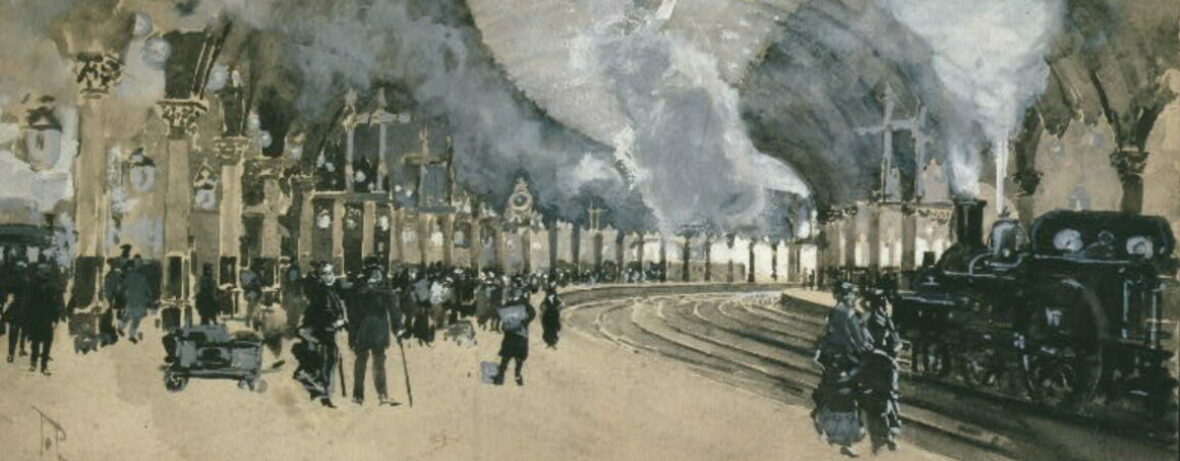The three specific CanCor objectives (O1-O3) cover infrastructure development projects of the second half of the nineteenth century – which stood out by their sheer size, cost, and visibility – and were a subject of intense debate across the whole of society.
O1. The Age of Railway Concessions (1840s-1870s). O1 will trace the development of the first plans for the introduction of railways to the more ambitious concessions of the late 1860s (like the Barclay-Staniforth or von Oppenheim concessions). The role of foreign capital in kick-starting industrialisation, and the perceived danger of foreign intrusion proved a recurring anxiety for the ideologues of economic nationalism (like D.P. Marțian or C.A. Rosetti). By the late 1860s, public and politicians alike were already primed to interpret railway infrastructure concessions as potentially dangerous, if not overtly “colonial”. For instance, the von Offenheim concession was seen as a bridgehead for Austrian expansionism; while building a modern infrastructure for the newly acquired (1878) Dobruja’s ports (notably Constanța’s seaport and railway bridge across the Danube) was perceived as proof of Romania’s technological capacity and independence, in line with the independent kingdom’s civilising (and, indeed, colonial) ambitions in the region. Such controversies opened the way toward nationalising the growing railway network via state buybacks (themselves a matter of strong contention), as a means of avoiding economic “vassalage” at a time when political autonomy was jealously guarded. O1 will show the importance of colonial anxieties generated by the presence of foreign capital and expertise in the process of railway development.
O2. The Age of Scandals (1860s-1890s). Despite controversies, Romanian elites and governments felt that building rail and fluvial-maritime transportation infrastructure was of utmost urgency: the risks carried by foreign capital and its potential colonising effects had to be mitigated, even as they seemed unavoidable. O2 will show the performative capacity infrastructure-related scandals had in unravelling conceptions of “corruption” and practices deemed corrupt. Based on our exploratory research, all fluvial, maritime and rail concessions led to the establishment of parliamentary committees, attracted international attention, and ultimately led to nationalisations. We argue that the vocabulary of “colonialism” and “corruption” constantly recurred in the public/political discourse of historical actors engaged in infrastructure construction and helped normativise the interpretation of both the national and the international in a colonial key. O2 thus aims at historicising the colonialism-corruption nexus in Romanian political discourse in the main rail and fluvial-maritime concessions-related scandals.
O3. Infrastructure, Otherings, and the Colonial. By reassessing the entanglement between “corruption” and “colonialism” and by investigating the denunciation of corruption as a discursive practice, O3 will focus on the tropes Romanian nation-builders used to separate the national from the “corrupt” foreign, eager to legitimize a (projected) national state and to identify the blameworthy for colonial-like encroachments in major infrastructure projects, and knowledge, capitals, and expertise transfusion across the borders. O3 aims to establish how the power imbalances inherent to the perceived colonial relationships translated into historical actors’ exclusionary policies and attitudes. We will investigate the historical understandings of “corruption” as something perceived to have been introduced or amplified by the physical presence and/or economic domination of a foreign Other. O3 will also scrutinize the evolution of Romanian anti-Semitism as a crucial case-study in this regard, as a discourse and set of practices concerned explicitly with stereotyping the Jewish community as both a vector of “corruption”, and as foreign agent of “colonial” encroachment. O3 will show that thinking about “colonialism” had an inherent impact on how nation-building created its internal and external ethnic Others.
